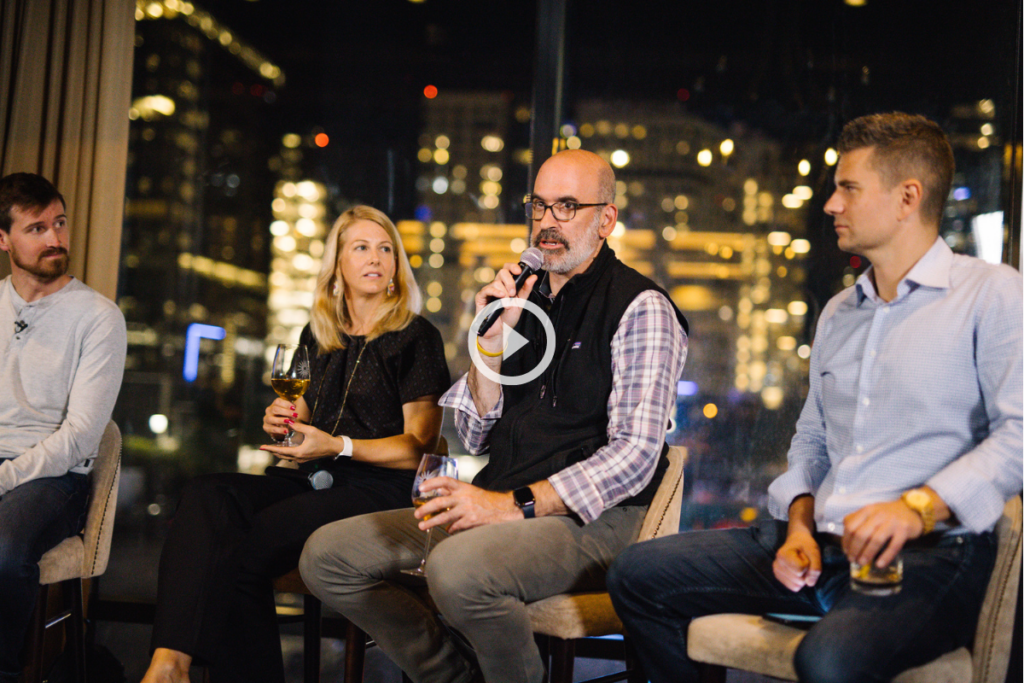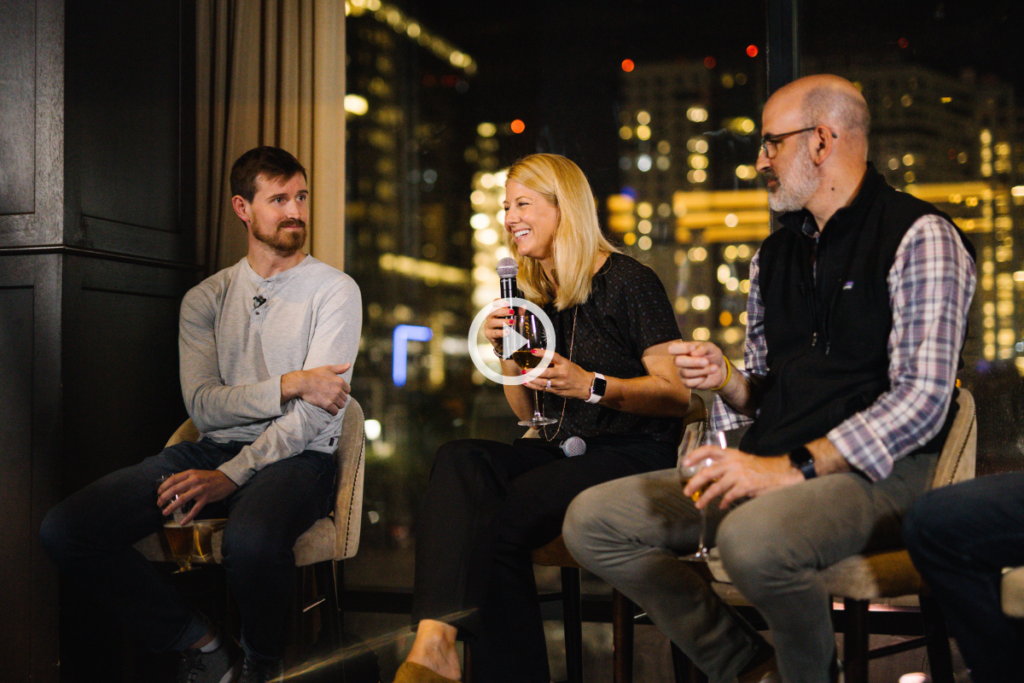How can sales-led SaaS embrace Product-led Growth to drive net new ARR?
How can sales-led SaaS embrace Product-led Growth to drive net new ARR?
Today’s SaaS boardrooms are abuzz with conversations about Product-led Growth (PLG).
It’s no surprise as to why.
Amidst a choppy macro landscape, investors looking for efficient growth are naturally drawn to PLG for its lower CAC and higher LTV relative to sales-led SaaS.
RevOps leaders are tasked with sorting the operational challenge of launching a PLG motion that complements – rather than conflicts – with existing sales-led GTM motions.
We brought together a group of PLG thought leaders to discuss how sales-led SaaS companies should think about weaving PLG into their existing sales-led GTM motions and measuring success.
Joining our discussion are:
- Aaron Dun is Chief Growth Officer at Scalepath.io, leading GTM strategy and operations.
- Nichole Mace is VP of Product Growth at Pendo, leading PLG strategy.
- Curt Townshend is Sr. Director of Growth at OpenView Partners, the VC firm that first coined the term PLG in 2016.
- Adrian Barek, Senior Sales Executive at OpFocus and our MC for the evening.
This discussion will equip you with a better understanding of what PLG is, common pitfalls to avoid, and how to take steps to implement it at your company.
What was the ‘ah-ha’ moment leading you to pursue a career in PLG?
Many of our panelists fell into their PLG role by accident.
Nichole began her journey at LogMeIn, where PE investors tasked her with implementing a paywall for their 6.5 million free users of LastPass. This paywall ultimately increased revenue by 70% among those happy to pay for a product they found value in. However, the move wasn’t without controversy, with many negative PR articles published and a minority of vocal users taking to Reddit to criticize the decision.
Curt worked at Fuse, where he found the company’s focus on selling more to existing customers was hampered by a friction-heavy buying process. While researching ways to solve this, he found a wealth of value in the OpenView blog, which ultimately led to his decision to put the product first and work from there.
Aaron bounced around inbound and product marketing roles and saw PLG as “just good marketing.” His team began offering a free trial and decided to expand users from there. It wasn’t until much later that the concept of PLG was born.
How do I get started with PLG?
Almost all SaaS companies have a sales-led function. When transitioning or starting the transition to a PLG model, there are questions from sales. First, understand your team’s sales function and goals; are you opening new markets or expanding existing customers? It’s also essential to understand the engineering required to roll out a PLG model is relatively extensive. It requires time and effort to roll out successfully.
When is the right time to implement PLG?
Nichole’s organization initially had a paywall but removed it to maximize the number of free users on LogMeIn. Once acquired, the business pushed for monetizing these free users. Even free models require time and effort to support, which strains the company. In her case, a business need pushed them to implement a PLG model.
What attributes should a SaaS company look for when considering PLG potential?
The first thing to do is talk to end users. These are the actual users of your product, not the managers who sometimes buy it on their behalf. Ask what their life would be like if you took the platform away from them. Listen to customer calls with tools like Gong.
Curt suggested a simple yet easily overlooked step: buy your product online and audit the process. Anywhere you find friction is an area you’ll need to streamline to adopt PLG.
Look for the “Ah Ha” moment that leads your customers to buy your product. You can ask sales the same question, and the difference in answers may be illuminating.
How can SaaS leaders balance qualitative and quantitative data?
We live in a world of data, and while that’s important, so is the qualitative feedback you get from speaking with your customers. To get a full view of your user activity, you must connect with them and hear firsthand where they’re finding value in your products. Usage data can tell you how customers are using your product and what features they spend the most time on, but only by talking directly to them will you understand why. Qualitative feedback is also an opportunity for designing tests to run with other users. If users mention a specific activity is their ah-ha moment, build motions that lead them to these activities. Look at the data after your test to see if there’s an increase in conversions.
How can I drive alignment around PLG in my team?
Like any new strategy that touches multiple departments, alignment is crucial to nailing PLG. Getting feedback and buy-in from various stakeholders is an essential first step. Establishing a Program Management Office or steering committee to manage cross-functionally will assist with ongoing change management, resource allocation, and decision-making.
Sales can be particularly challenging to get on board as they often see PLG as a threat to their domain. Emphasizing the leads PLG will generate for sales and ensuring their compensation is aligned to the outcomes you’re looking to drive – even if that means temporarily double-comping – will pay for itself via faster adoption of the new approach.
Systems and Data
Blending the person-denominated world of PLG with the company-denominated world of B2B makes data modeling – and all the systems and processes driven by data – that much more difficult.
Invest the time to develop a robust data model that factors the B2C processes inherent in PLG with the B2B processes at the core of sales-led selling.
Most SaaS companies selling to the middle market or enterprise are likely working towards an Account Centric data model to support ABM. This approach aligns neatly with the desire to be hyper-targeted in B2B sales outreach to the specific companies whose employees are already users of PLG products.
Once the data model is defined, data enrichment is the next step.
People signing up for free products rarely use their corporate contact info, and to reduce friction in the buying processes, most PLG companies don’t ask for it.
To mine the B2B gold hidden within a base of free or paid users, data enrichment is crucial to knowing the firmographic data about who these people are and the company/division/business unit where they work.
By pairing firmographic data with usage data, we empower an effective B2B sales motion targeting the right people within the right companies.
What’s one thing you can do to test out where you are in your PLG readiness?
One suggestion is to go out and buy your product and see how difficult it is for your customers to do this. Once you have your product, try using it. See how intuitive it is to add users and buy gated features. Doing so shows you how easy or challenging it is to use your product. Any areas of friction should be focus areas when rolling out a PLG function.
Begin implementing PLG at your organization.
After listening to the discussion or reading this blog, you know how to take the first steps in implementing PLG and the common speedbumps to avoid. To assist your team with getting your PLG program off the ground, pick up the brain of a SaaS expert about how your platforms and integrations integrate into your implementation strategy. Discuss how to integrate your SaaS platform with your CRM, marketing automation tool, Salesforce CPQ, and Experience cloud. Access the platform expertise you need to launch PLG this quarter. Are you ready to take the first steps?











